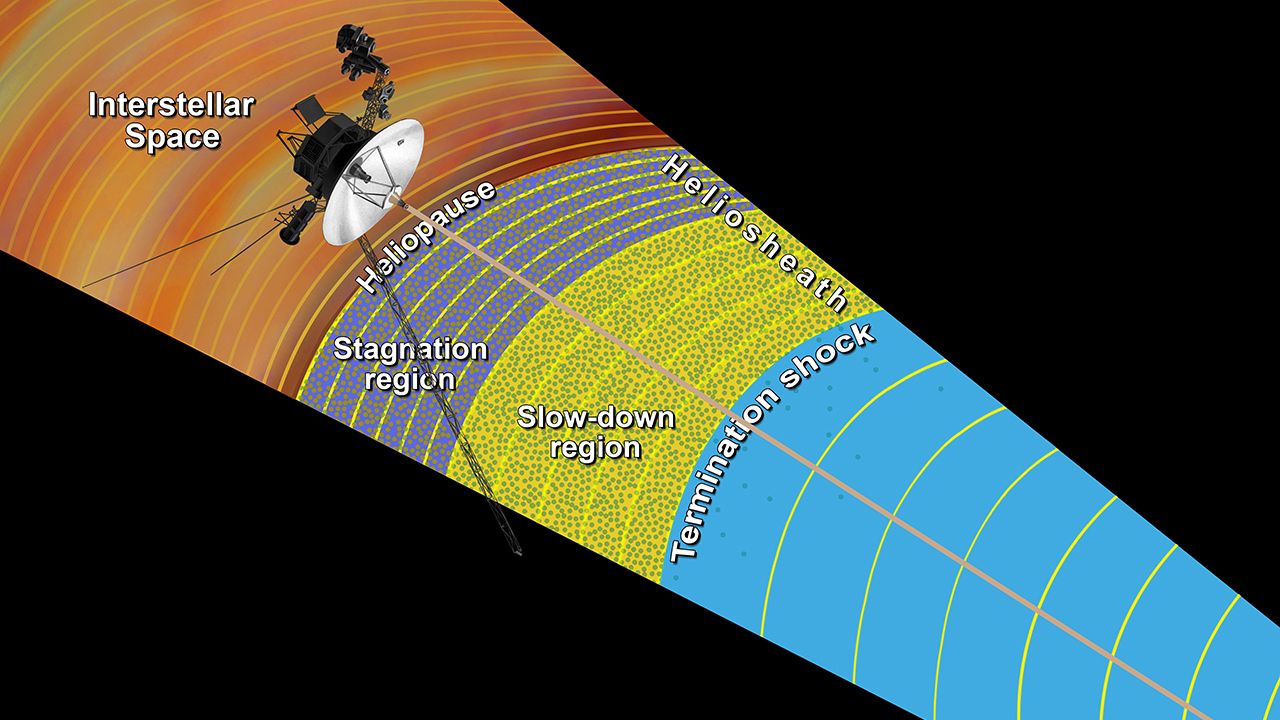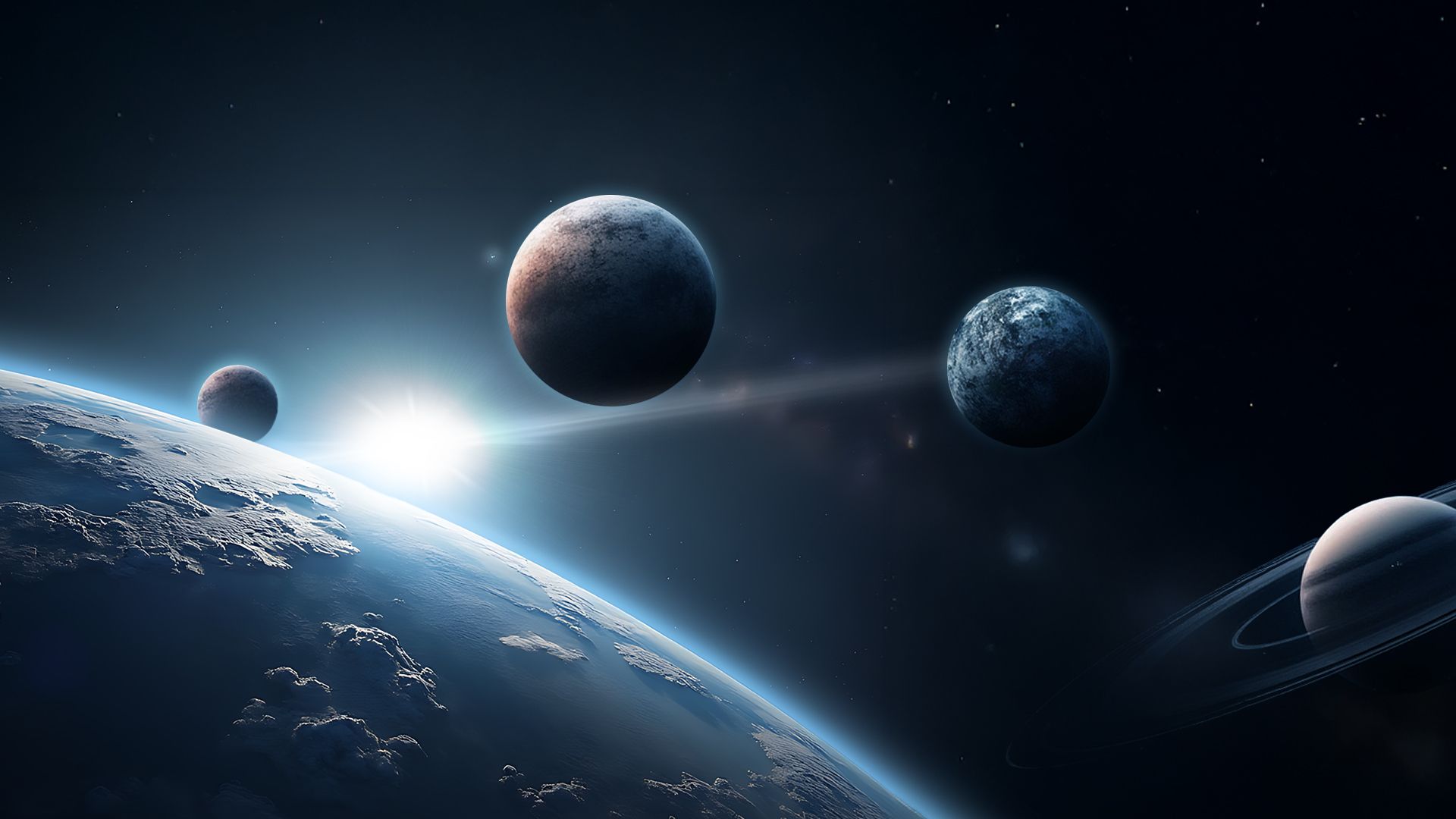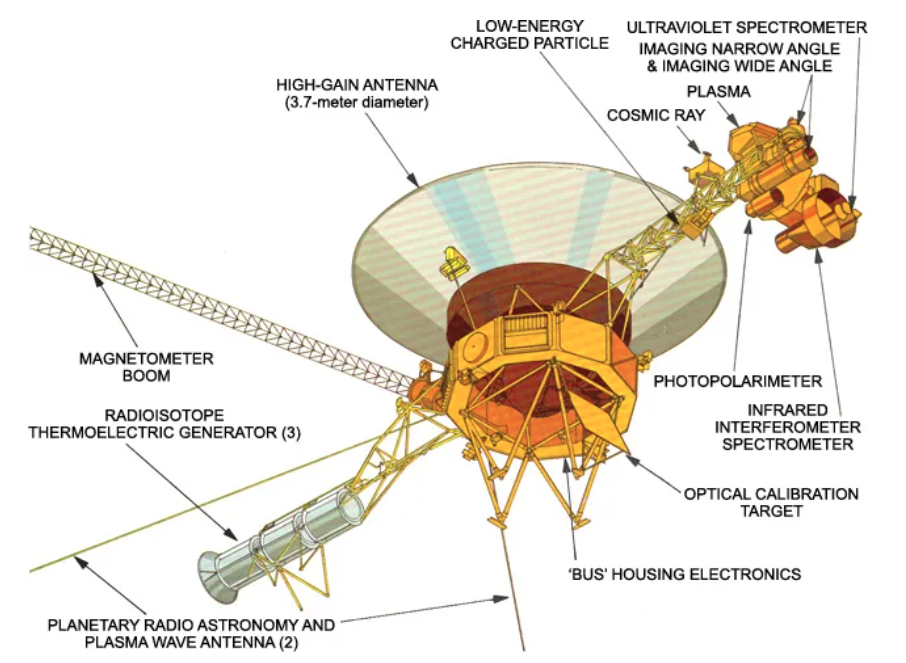Summary
- Voyager 1 and 2 are the first human-made objects in interstellar space, unveiling new findings.
- Voyagers’ groundbreaking discoveries in the solar system exceeded NASA’s original intentions.
- Maintaining and—when absolutely necessary—shutting down the probes’ instruments prolongs their life.
For many, the Voyager mission will be remembered as the most significant achievement in space exploration. As you read this today, the two probes continue to gather data as they travel through interstellar space, nearly half a century after they first launched from Cape Canaveral in 1977.
The First Spacecraft to Visit Interstellar Space
When Voyager 1 entered interstellar space on August 25, 2012, it was the first human-made object to pass the heliopause—the boundary marking the place at which hot solar winds meet cold interstellar space, and where the forces from outside the solar system are more potent than those from our Sun.
Amusingly, even though the craft achieved this enviable feat on August 25, 2012, the NASA Voyager team couldn’t confirm this until April 9, 2013, because the probe’s plasma science instrument had stopped working over 30 years prior. Instead, scientists had to wait until Voyager 1’s plasma wave subsystem detected oscillations in the plasma surrounding the spacecraft to confirm that it was traveling through an increasingly dense region of plasma.
Voyager 2 crossed the same boundary more than six years later on November 5, 2018, and to this day, the two spacecraft remain the only human-made objects to ever occupy interstellar space.
As a result of these groundbreaking crossings, scientists have been able to take novel measurements and unearth fascinating discoveries. Indeed, because no other spacecraft has ever entered interstellar space, much of what the Voyager probes discover is news to us on Earth.
For example, the probes’ onboard magnetometers have measured the interstellar magnetic field around the outside of the heliosheath—a bubble-like region surrounding the Sun—giving us a clearer picture of how galaxies were shaped. Similarly, being able to measure the density of the interstellar medium gives scientists more details about the forces and structures operating between stars.
Patrick Koehn, Voyager program scientist at NASA Headquarters in Washington, said, “Every bit of additional data we have gathered since [the spacecraft left the solar system] is not only valuable bonus science for heliophysics, but also a testament to the exemplary engineering that has gone into the Voyagers—starting nearly 50 years ago and continuing to this day.”
Did you know? Aboard Voyagers 1 and 2 are time capsule messages that show what life is like on Earth, such as the sounds we hear (including greetings in 55 languages!), the sights we see, and the diversity of life on our planet. These messages are contained within disks called “The Golden Record,” whose covers contain instructions for playing their contents and finding Earth.
Amazing Discoveries in the Solar System
One of the Voyagers’ objectives was to characterize the outer solar system’s environment, which it completed in 1989. In fact, what the probes achieved significantly outperformed what NASA scientists had initially intended.
Voyager 1
Voyager 1’s primary goal was to perform flybys of Jupiter in 1978 and Saturn a year later, hoping to get a closer look at the planets’ finer details and their moons. In fact, as well as achieving these objectives, the craft also made some fantastically unexpected discoveries:
- Voyager 1 discovered the first active volcanoes beyond Earth on Jupiter’s moon, Io.
- This spacecraft also made the surprising discovery of Jupiter’s ring system, called the G-ring, and two additional moons, Thebe and Metis.
- Although astronomers already knew that Jupiter’s Great Red Spot existed, Voyager 1 revealed that it is a complex storm system that is moving in an anticlockwise direction around the planet.
- Jupiter has lightning! This discovery was the first time lightning had ever been seen beyond Earth.
- As well as discovering two moons orbiting Jupiter, Voyager 1 unearthed the presence of previously unseen Saturnian moons, including Atlas, Prometheus, and Pandora.
Voyager 2
Voyager 2’s goals were more complex than those of its twin. In addition to performing flybys of Jupiter and Saturn, it was tasked with capturing close-up images of Uranus and Neptune. Here are some of Voyager 2’s most impressive discoveries:
- If Voyager 1’s discovery of two of Jupiter’s moons wasn’t exciting enough, Voyager 2’s discovery of Adrastea was the icing on the big, round, gaseous cake.
- Voyager 2’s high-quality images of Europa, one of Jupiter’s moons, revealed features that suggest the body has a subterranean ocean.
- After Voyager 1 discovered evidence of volcanic activity on Io, Voyager 2 confirmed this finding, observing volcanic plumes and remarkable changes to the moon’s surface.
- Voyager 2 produced images that made scientists realize there’s a hexagonal-shaped weather feature—two times as wide as Earth—circulating around Saturn’s North Pole.
- During its Uranus flyby, Voyager 2 discovered 10 new moons—Puck, Portia, Juliet, Cressida, Rosalind, Belinda, Desdemona, Cordelia, Ophelia, and Bianca—and two new rings orbiting the planet.
- Subsequently, as it observed Neptune, it discovered six new moons—Proteus, Larissa, Despina, Galatea, Thalassa, and Naiad.

Related
Why is Finding Water in Space so Important?
Humans need water to survive, so we need to find water in space to explore it. But that’s not the only reason water in space is so important.
Breathtaking Numbers
If I haven’t yet managed to persuade you that Voyager is the greatest space mission ever, let me share with you some numbers:
- Voyager 1 is around 15.6 billion miles from Earth (about 167 times the distance between us and the Sun), and Voyager 2 is around 13.1 billion miles from Earth (about 140 times the distance between us and the Sun).
- Voyager 1 travels at around 38,000 miles per hour, and Voyager 2 travels at about 34,400 miles per hour. For comparison, the International Space Station travels at around 17,500 miles per hour, and Earth’s circumference is about 25,000 miles.
- Each Voyager probe contains five million equivalent parts. To put this into perspective, a color TV has around 2,500 equivalent parts, meaning each spacecraft has the electronic complexity of around 2,000 of these.
- The cost of both missions, from launch to the Neptune flyby, was $865 million. While this might sound extortionate, it equates to 8 cents per US resident per year during the same period.
- More than 5 trillion bits of scientific data have been sent to Earth by each spacecraft.
It’s the Power of the People
It’s amazing to think that the Voyager probes continue to work today with software and hardware designed in the 1970s.
According to John Casani, the Voyager project manager who oversaw the mission preparation right up to launch, the NASA team refused to place a life expectancy on the spacecraft: “We didn’t design them to last 30 years or 40 years,” he said. “We designed them not to fail.” Even if you disagree about Voyager being the greatest mission ever, you surely must concede that the probes are home to among the most impressive scientific instruments humankind has ever manufactured.
And Casani was right—so much so that engineers who worked under his watch in the 1970s sometimes offer their spare time in retirement to assist young engineers involved in the mission today. Suzanne Dodd, the current mission manager, said that it’s exciting to see current NASA employees “take on the challenges of an old mission and to work side by side with some of the masters, the people that built the spacecraft.”
The ingenuity goes on. In 2024, NASA engineers switched Voyager 1’s thrusters when one of the original ones became blocked. A year earlier, in November 2023, there was an issue with Voyager 1 sending engineering updates to Earth. However, engineers fixed the issue by mid-2024. Given that radio signals take around 22.5 hours to reach Voyager 1 from Earth (and then another 22.5 hours to return), and slightly less time for Voyager 2, we shouldn’t underestimate the difficulty of these types of maintenance tasks.
Sadly, It Won’t Last Forever
It’s inevitable that the Voyager probes won’t last forever. Indeed, the power generated by the spacecrafts’ three radioisotope thermoelectric generators diminishes by about four watts every year.
As a result, to prolong the lives of the interstellar inhabitants, NASA powers down some of their key instruments as they become redundant or dysfunctional. Indeed, on February 25, 2025, mission scientists at NASA’s Jet Propulsion Laboratory (JPL) shut down Voyager 1’s cosmic ray subsystem, and a month later, Voyager 2’s low-energy charged particles instrument was turned off.
NASA plans to turn off more instruments through 2025 and 2026, which, while nearly as sad as seeing a loved one gradually lose their faculties, brings the good news that NASA expects the probes to continue running for at least a few more months. That said, don’t rule out things terminating before then. The JPL is acutely aware that “unforeseen challenges” could cause ang abrupt halt to the mission at any moment. Similarly, Linda Spiker, Voyager project scientist at JPL, concedes that “every day could be our last.”
According to NASA, “Communications will be maintained until the Voyagers’ nuclear power sources can no longer supply enough electrical energy to power critical subsystems.” How long that proves to be, only time will tell. Hopefully, we’ve still got a couple of years of amazing discoveries and fantastic insights from what I would definitely say is the greatest mission ever.
A close second for me, however, is the Opportunity Mars Rover mission, which survived 15 years despite engineers expecting it to operate for only three months. Martian winds helped clear the craft’s solar panels of the planet’s red dust, and the rover’s high-spec equipment led it to break Martian records.







